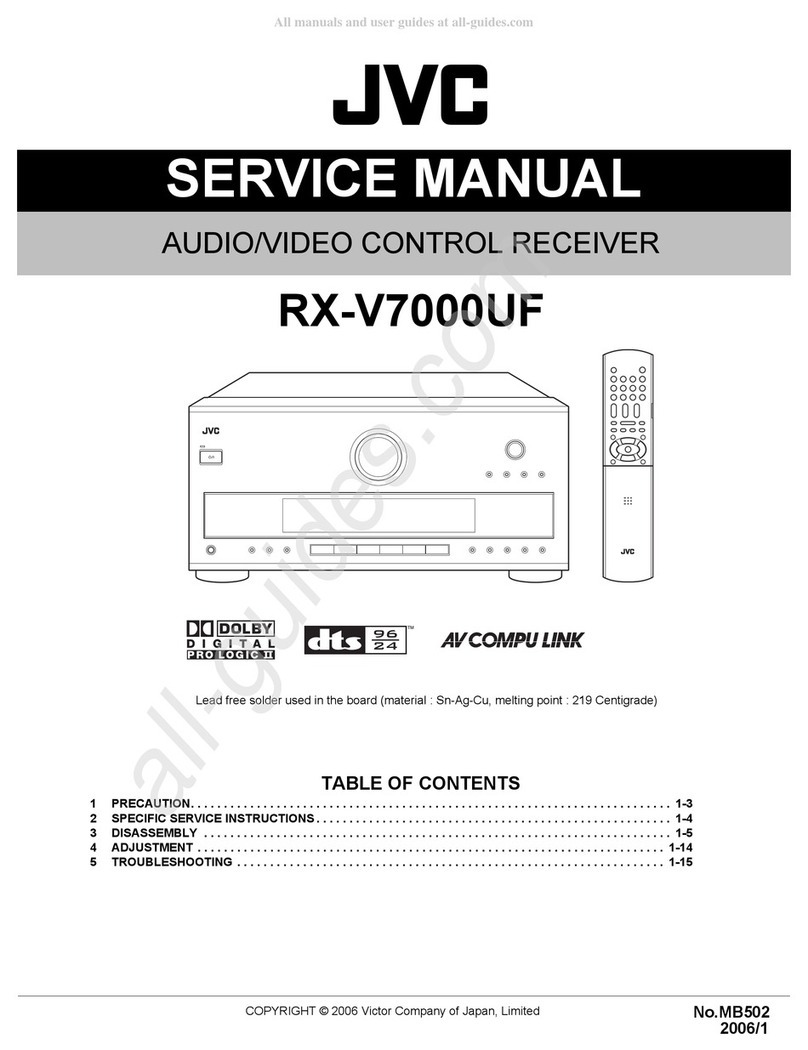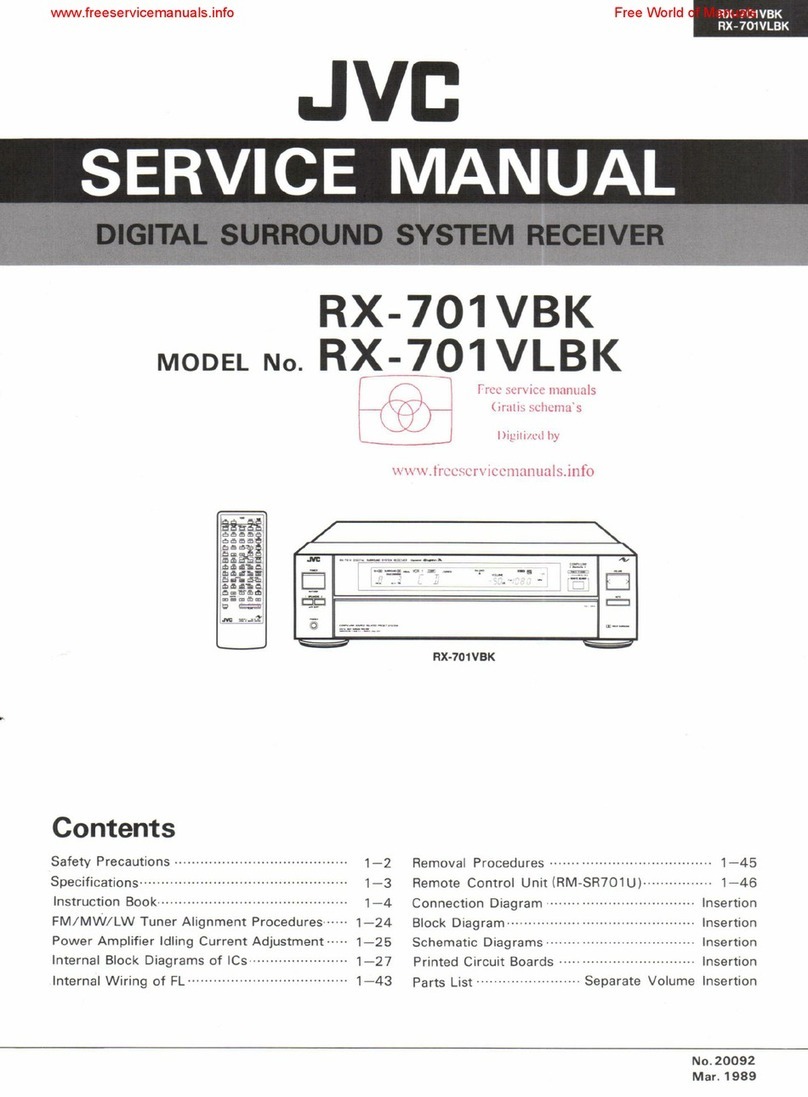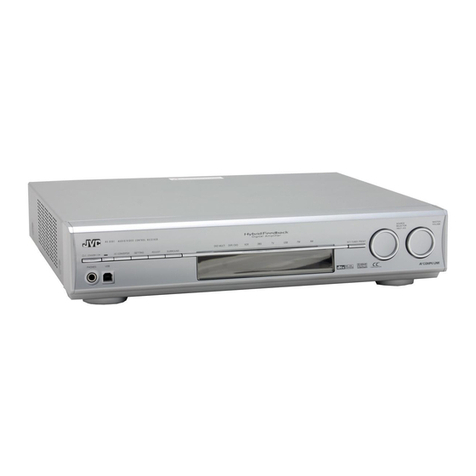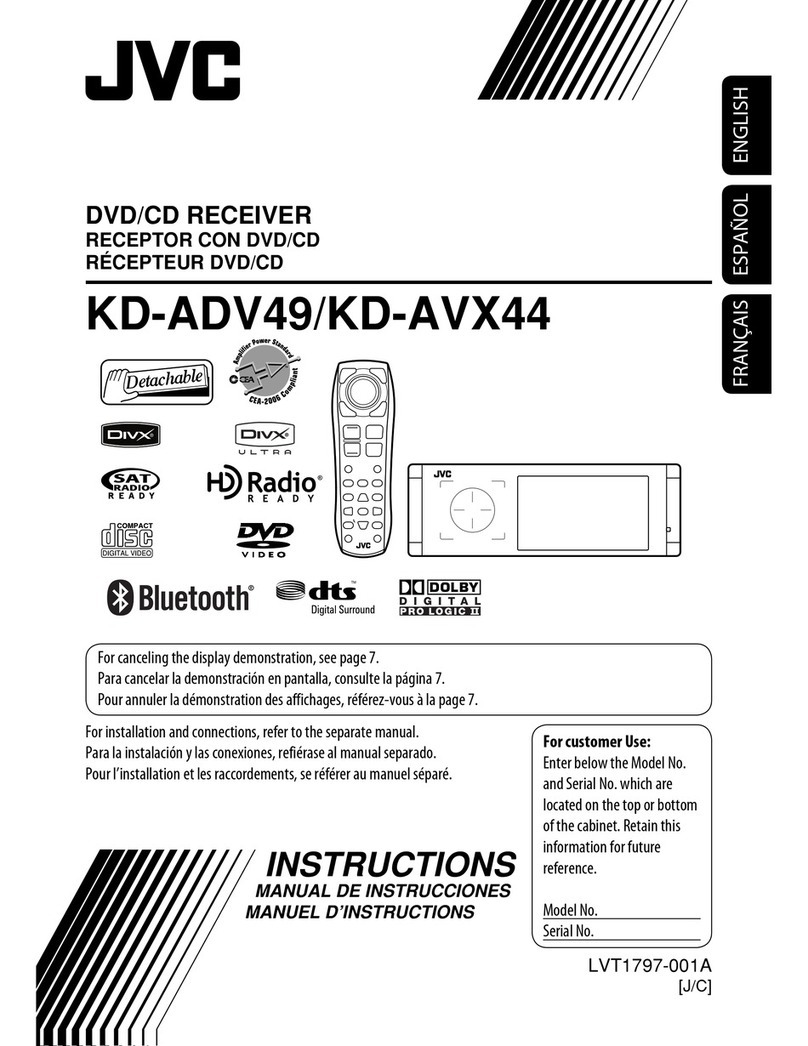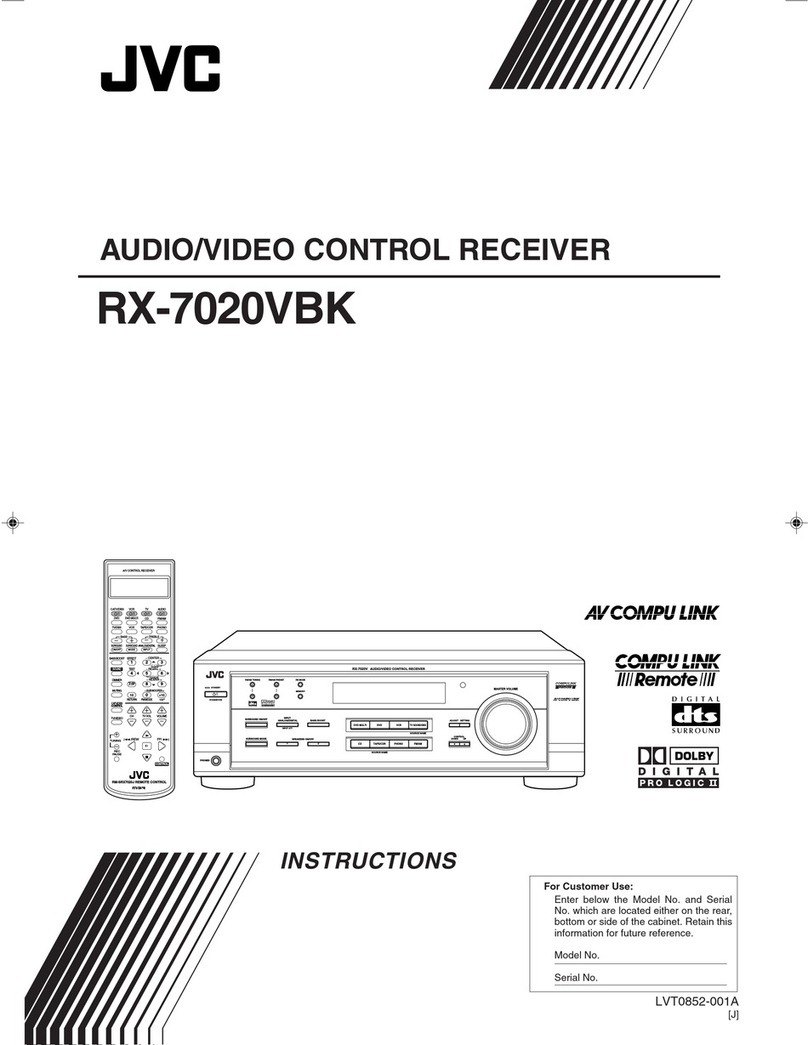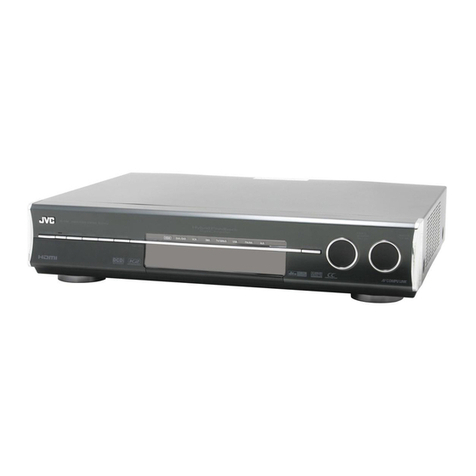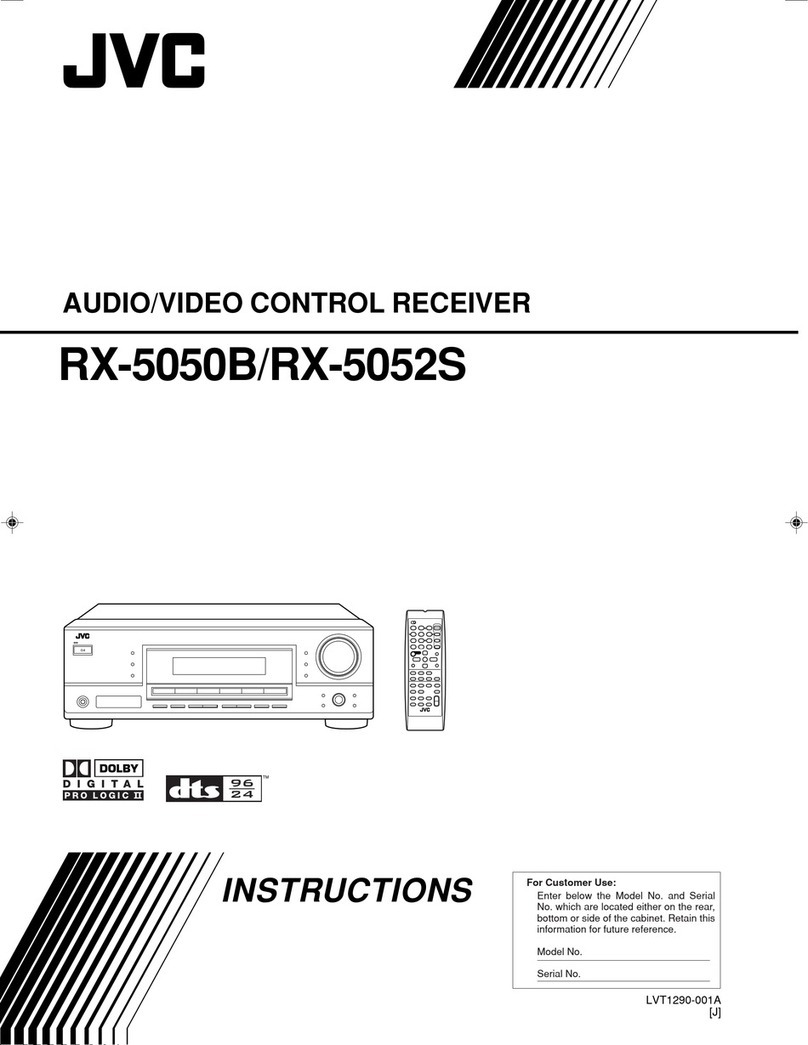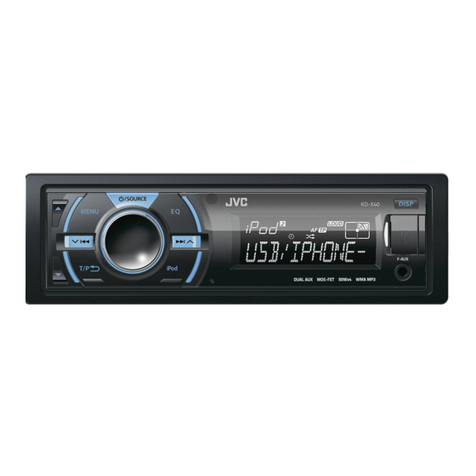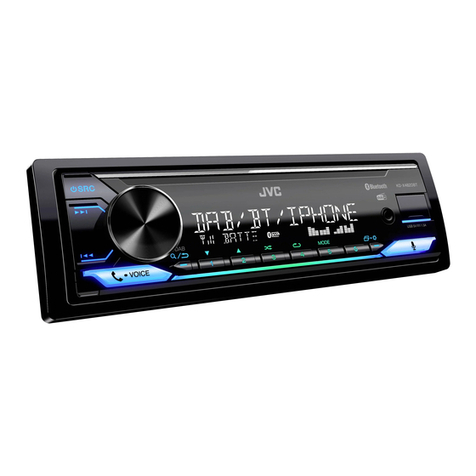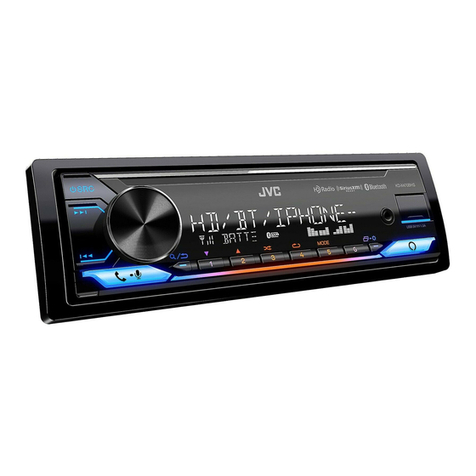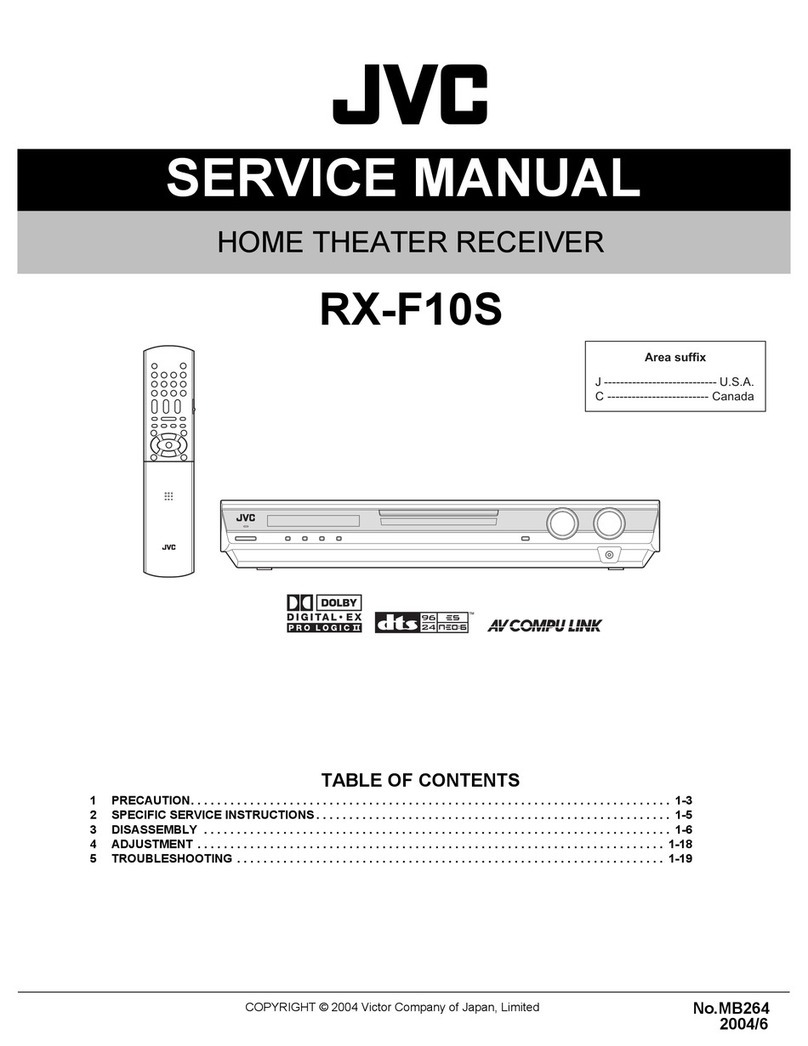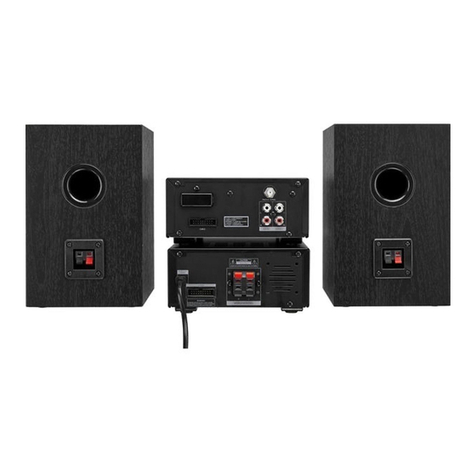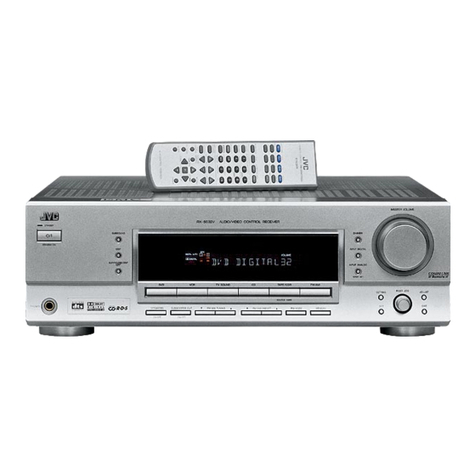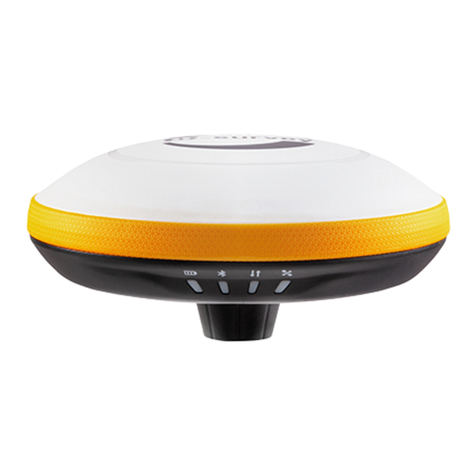
G-3
Caution –– POWER switch and STANDBY/ON button!
This apparatus is provided with a POWER switch to be able to
minimize power consumption for safe use. Therefore,
1. When doing initial setting, complete all the connections required,
connectthemainsplugintothewalloutlet,andsetthe POWER
switchtoON.Afterthese,itwillbeavailabletooperateSTANDBY/
ON button and so on.
2. When not in use, set the POWER switch to OFF.
3. Disconnect the mains plug to shut the power off completely. The
POWER switch and STANDBY/ON button in any position
do not disconnect the mains line.
4. The power can be remote controlled.
Achtung –– POWER-Schalter und STANDBY/ON -Taste!
Dieses Gerät hat einen Netzschalter ( POWER), um den
Stromverbrauch für sichere Verwendung auf ein Minimum bringen zu
können. Verfahren Sie deshalb wie folgt:
1. Beim ursprünglichen Aufbau alle erforderlichen Anschlüsse
herstellen, den Netzstecker in eine Wandsteckdose stecken, und
den POWER-Schalter einschalten. Anschließend ist Betrieb
der STANDBY/ON -Taste usw. möglich.
2. Wenn das Gerät nicht verwendet wird, den POWER-Schalter
ausschalten.
3. Den Netzstecker aus der Steckdose ziehen, um die
Stromversorgung vollkommen zu unterbrechen. Der POWER-
Schalterunddie STANDBY/ON -Tasteunterbrecheninkeiner
Stellung die Stromversorgung vollkommen.
4. Die Stromversorgung kann mit der Fernbedienung ein- und
ausgeschaltet werden.
Attention — Commutateur POWERetd’unetoucheSTANDBY/
ON !
Cetappareilestéquipéd’uncommutateur POWERquiluipermetde
réduire sa consommation d’électricité pour une utilisation plus sûre.
Par conséquent,
1. En procédant au réglage initial, compléter toutes les connexions
nécessaires, connecter la fiche secteur dans la prise murale et
mettre le commutateur POWER sur la position ON. Ensuite, il
sera possible de contrôler la touche STANDBY/ON , etc.
2. Mettre le commutateur POWER sur la position OFF lorsque
l’appareil n’est pas utilisé.
3. Déconnecterlafichesecteurpourcoupercomplètementlecourant.
Le commutateur POWER et la touche STANDBY/ON ne
coupentjamais complètementl’alimentation, quelleque soitleurs
positions.
4. L’alimentation peut être télécommandée.
Voorzichtig –– POWER en STANDBY/ON schakelaars!
Dit apparaat is voorzien van een POWER hoofdschakelaar om het
apparaatgebruiksklaartezetten,maartezorgendathetstroomverbruik
minimaal blijft. Neem in verband hiermee het volgende in acht:
1. Bij de eerste ingebruikneming zorgt u eerst dat alle aansluitingen
in orde zijn, dan steekt u de stekker in het stopkontakt en dan zet
u de POWER schakelaar in de “ON” stand. Daarna kunt u het
apparaat aan- en uitschakelen met de STANDBY/ON
schakelaar.
2. Wanneeru hetapparaat geruime tijdniet gebruikt,kunt u beterde
POWER schakelaar in de “OFF” stand zetten.
3. Om de stroomtoevoer geheel uit te schakelen, trekt u de stekker
uit het stopkontakt. Anders zal er altijd een geringe hoeveelheid
stroom naar het apparaat lopen, ongeacht de stand van de
STANDBY/ON en de POWER.
4. U kunt het apparaat ook met de afstandsbediening aan- en
uitschakelen.
Precaución –– Interruptor POWER y botón STANDBY/ON !
Esta unidad dispone de un interruptor POWER que sirve para
reducir al mínimo el consumo de alimentación para proporcionar
mayor seguridad operacional. Por lo tanto,
1. Al ejecutar el ajuste inicial, después de completar todas las
conexiones requeridas, conectar el cable de alimentación a una
tomadepared,yactivarelinterruptor POWER.Entonces,será
posible ejecutar operaciones tales como la conmutación del
estado de alimentación.
2. Desactivar el interruptor POWER al dejar la unidad fuera de
uso.
3. Desconectar el cable de alimentación para desactivar la
alimentacióntotalmente.Cualquierquesea la posiciónde ajustes
del interruptor POWER y el botón STANDBY/ON , la
alimentación no es cortada completamente.
4. La alimentación puede ser controlada remotamente.
Attenzione –– Interruttore POWER e tasto STANDBY/ON !
Per ridurre al minimo l’assorbimento di corrente ai fini della sicurezza,
questo apparecchio è stato dodato di un interruttore POWER. Di
conseguenza,
1. Al momento dell’impostazione iniziale, completare tutti i
collegamenti richiesti, inserire la spina del cavo di alimentazione
nella presa a muro della rete elettrica e impostare l’interruttore
POWER in posizione ON. Fatto ciò, sarà pronto all’uso
STANDBY/ON .
2. Quandononinuso,impostarel’interruttore POWER inposizione
OFF.
3. Disinserirelaspinadelcavodialimentazionedallapresadellarete
elettricaperstaccarecompletamentel’alimentazione.L’interruttore
POWER e il tasto STANDBY/ON in nessuna posizione
staccano la linea di alimentazione elettrica principale.
4. È possibile il controllo remoto dell’alimentazione.
RX-730RBK(EF)_0054-001A_G-Page 97.7.26, 9:25 AM3
